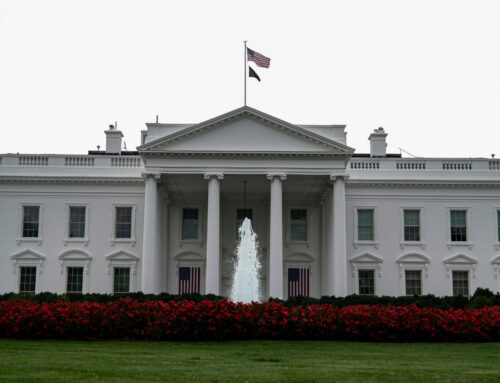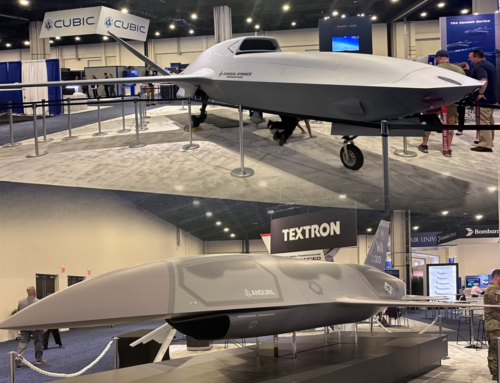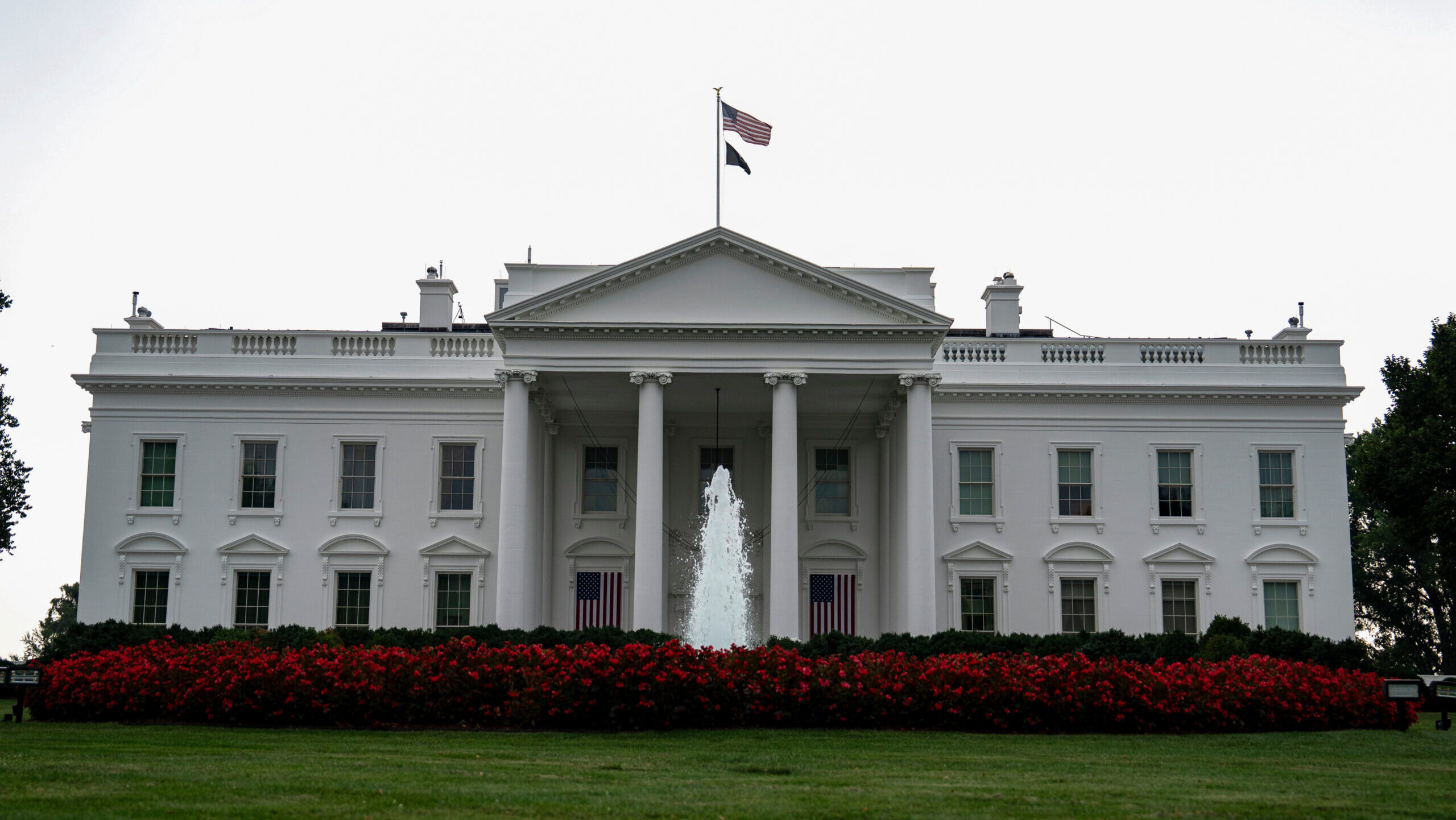A cloud of smoke erupts during an Israeli air strike on a village outside Tyre in southern Lebanon on September 26, 2024. (Photo by KAWNAT HAJU / AFP) (Photo by KAWNAT HAJU/AFP via Getty Images)
JERUSALEM — Israel has called up two reserve brigades to reinforce its forces in the north, amid indications the military could launch a significant ground operation targeting Hezbollah in Lebanon.
“We are not stopping,” Chief of Staff Lt. Gen. Herzi Halevi, said Wednesday according to Israeli media. “The Air Force is striking all day, and we are preparing for an operation.”
The US and France are pushing for an immediate 21-day ceasefire, but today Israel denied reports it was on board. Any ground operation would follow now-days-long aerial bombardment of what the Israel Defense Forces said are targeting Hezbollah weapons caches hidden in southern Lebanon.
That assault followed a series of strikes last week that the IDF said eliminated more than a dozen top Hezbollah commanders and an unprecedented purported Israeli intelligence operation to detonate hundreds of booby-trapped pagers and walkie-talkies carried by Hezbollah members.
Taken together, Israel’s string of stunning successes in operations against Hezbollah in recent days, analysts said, is further evidence of a widely held belief that Jerusalem for years concentrated more on taking on the Lebanese Shi’a group than other threats like Hamas — thinking that help led to Israel’s failures ahead of Hamas’s surprise Oct. 7 attack. In a sense, the fight with Hezbollah is the fight for which Israel was actually prepared.
“Israel has shown amazing intelligence penetration of Hezbollah in comparison to Hamas,” Yaakov Katz, author of “Israel vs. Iran: The Shadow War” and a fellow at The Jewish People Policy Institute, told Breaking Defense. “It is the result of the focus that IDF put on the northern front over the last 18 years, ever since the Second Lebanon War, and focusing its intelligence collection on the north at the expense of other fronts like Gaza.”
Carmit Valensi, a senior researcher at the Institute for National Security Studies (INSS) and the head of the Northern Arena Program, added that in years of preparation the IDF “developed a range of operational plans designed to target [Hezbollah] from different angles.
“While much of our focus was on preparing for a confrontation with Hezbollah, we somewhat neglected the southern arena and the evolving situation with Hamas in Gaza,” she said.
Short of its patron Iran, Hezbollah has long been seen by Israeli forces as the direst threat in the region. The group is believed to consist of tens of thousands of members and was estimated to have an arsenal of 150,000 to 200,000 rockets, making it capable of launching some 1,500 a day, according to a 2021 Israeli assessment. In recent years it has also with Iran’s purported help acquired precision guided munitions and one-way attack drones, munitions that can threaten Israeli cities if sent in large enough numbers to overwhelm or exhaust Israeli’s vaunted three-layer air defense system.
Jonathan Lord, a former Pentagon analyst currently with the Center for New America Security, said that Israel sees Hezbollah as a “strategic-level” threat.
“As damaging as Oct. 7 was, Hamas does not and did not present a strategic-level threat in the way Hezbollah does,” Lord told Breaking Defense. Still, he argued, it’s not as simple as a binary choice to explain where Israel was looking on Oct. 7. Rather, he said, that security failure was an outcome of the false assumption that Hamas had been successfully deterred from action.
“If that hadn’t been the accepted concept in the establishment, Israel’s posture in the south would be different, [the] intel focus would be different,” he said. “It would have been inclusive of that as a threat.”
In 2020 the IDF rolled out a new doctrine called Momentum, which envisioned using the IDF’s increasing shift to new technology and digitization to maximize its capabilities on the battlefield. Against enemies such as Hezbollah and Hamas, which use more traditional weapons such as improvised explosive devices, anti-tank missiles and rockets, the IDF’s high-tech army appeared to be well-placed to overcome the challenge.
“This includes the ability to not only defeat a terror army like Hezbollah but also to do it relatively quickly, at an acceptable cost to our forces and our home front, and in a way that is irrefutable,” the IDF noted at the time.
In its urgent response to the Oct. 7 attack, Israel did deploy its high-tech weapons and platforms, including a reportedly a controversial AI system, but the long campaign — about to reach its first year — was characterized more by mass bombardment of Gaza, which has drawn stark international condemnation.
But a fight in the north could be different, especially with Hezbollah very much on its back foot.
“The core strategy behind these preparations was to degrade Hezbollah’s capabilities in advance, improving our position before engaging in any extensive military operations or full-scale war,” Valensi said. “The objective was to weaken Hezbollah’s strength and create a more favorable, manageable battlefield, making it easier to confront Hezbollah’s operatives when the time came for a larger confrontation.”
MORE COVERAGE ON ISRAEL AND LEBANON:
For Lebanon, a war in all but name has finally arrived: Experts
In first, Hezbollah launches Qadr 1 ballistic missile towards Tel Aviv
How Israel degraded Hezbollah for years to come, in 8 days
Exploding pagers, major strike: Israel turns its war aims north in ‘new phase’
The UN’s peacekeeping mission in Lebanon has been renewed, but amid constant clashes, will it help?
In Northern Israel, emptied villages and talk of war in Lebanon
In South Lebanon, empty villages, ruined crops and fears of what comes next
Aaron Mehta contributed to this report.










